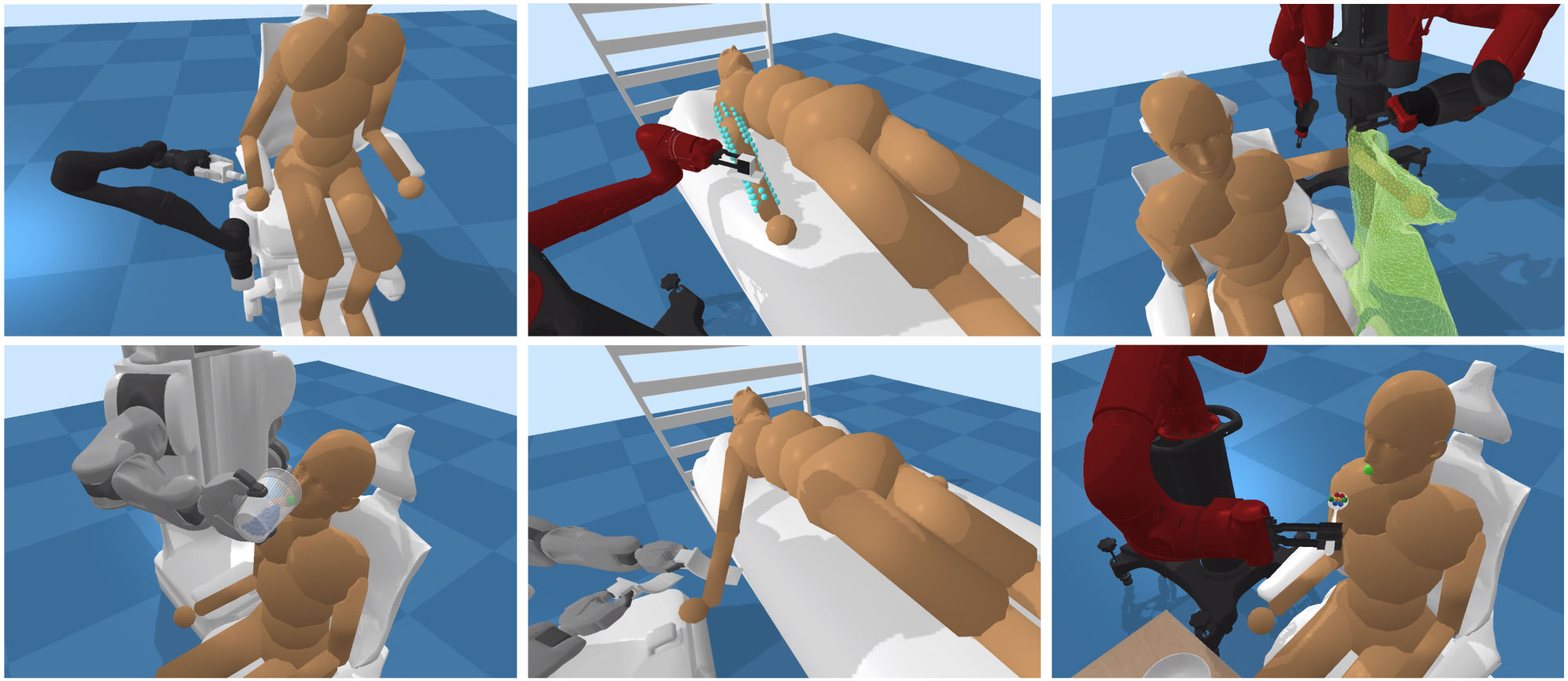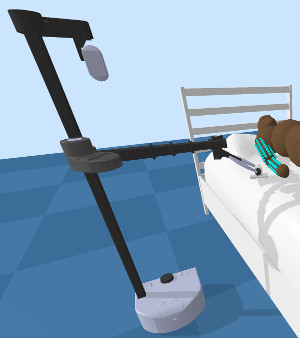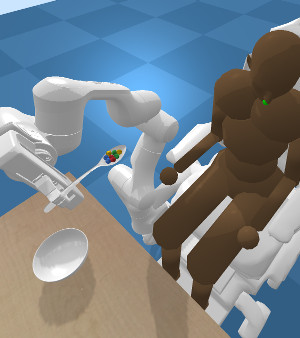See the Wiki for all available Google Colab examples.
Assistive Gym is a physics-based simulation framework for physical human-robot interaction and robotic assistance.
Assistive Gym is integrated into the OpenAI Gym interface, enabling the use of existing reinforcement learning and control algorithms to teach robots how to interact with people.
A paper on Assistive Gym can be found at https://arxiv.org/pdf/1910.04700.pdf
Z. Erickson, V. Gangaram, A. Kapusta, C. K. Liu, and C. C. Kemp, “Assistive Gym: A Physics Simulation Framework for Assistive Robotics”, IEEE International Conference on Robotics and Automation (ICRA), 2020.
@article{erickson2020assistivegym,
title={Assistive Gym: A Physics Simulation Framework for Assistive Robotics},
author={Erickson, Zackory and Gangaram, Vamsee and Kapusta, Ariel and Liu, C. Karen and Kemp, Charles C.},
journal={IEEE International Conference on Robotics and Automation (ICRA)},
year={2020}
}
Try out Assistive Gym in Google Colab. Assistive Gym is fully supported in Google Colab (online Python Jupyter notebook). Click on the link above for an example. Everything runs online, so you won't need to install anything on your local machine!
All of the available Google Colab examples are listed on the Wiki-Google Colab
pip3 install --upgrade pip
pip3 install git+https://github.com/Healthcare-Robotics/assistive-gym.gitWe recommend using Python 3.6 or 3.7 (although other Python 3.x versions may still work). You can either download Python 3.6 here, or use pyenv to install Python 3.6 in a local directory, e.g. pyenv install 3.6.5; pyenv local 3.6.5. Both Python 3.6.5 and 3.7.10 have been tested working.
We encourage installing Assistive Gym and its dependencies in a python virtualenv.
Installation instructions for Windows can also be found in the Install Guide.
python3 -m pip install --user virtualenv
python3 -m venv env
source env/bin/activate
pip3 install --upgrade pip
git clone https://github.com/Healthcare-Robotics/assistive-gym.git
cd assistive-gym
pip3 install -e .We provide a 10 Minute Getting Started Guide to help you get familiar with using Assistive Gym for assistive robotics research.
You can visualize the various Assistive Gym environments using the environment viewer.
A full list of available environment can be found Here (Environments).
python3 -m assistive_gym --env "FeedingJaco-v1"We provide pretrained control policies for each robot and assistive task.
See Running Pretrained Policies for details on how to run a pretrained policy.
See Training New Policies for documentation on how to train new control policies for Assistive Gym environments.
Finally, Creating a New Assistive Environment discusses the process of creating an Assistive Gym environment for your own human-robot interaction tasks.
See a list of common commands available in Assistive Gym 
end_effector_velocity = self.robot.get_velocity(self.robot.left_end_effector)end_effector_velocity = p.getLinkState(self.robot, 76 if self.robot_type=='pr2' else 19 if self.robot_type=='sawyer'
else 48 if self.robot_type=='baxter' else 8, computeForwardKinematics=True,
computeLinkVelocity=True, physicsClientId=self.id)[6]
Assistive Gym is now supported in Google Colab! Tons of new examples are now available for developing and learning with Assistive Gym in Google Colab. See the Wiki-Google Colab for a list of all the available example notebooks.
For robots with mobile bases, locomotion control is now supported. Ground frictions and slip can be dynamically changed for domain randomization.
Reference this Google Colab notebook for an example of mobile base control.
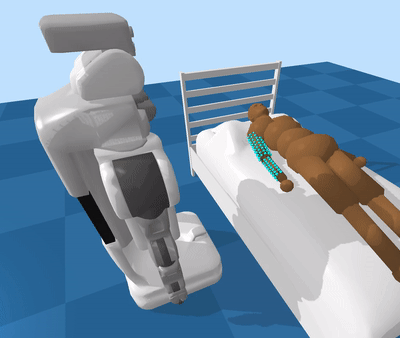
Assitive Gym now provides an interface for simulating and controlling multiple robots and people, all through the OpenAI Gym framework. See this example of multi-robot control .
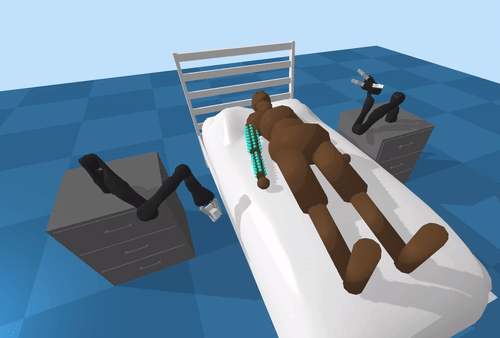
Assistive Gym can now be used with iGibson to simulate human-robot interaction in a visually realistic interactive home environment.
An example of using iGibson with Assistive Gym is available in this Google Colab notebook .
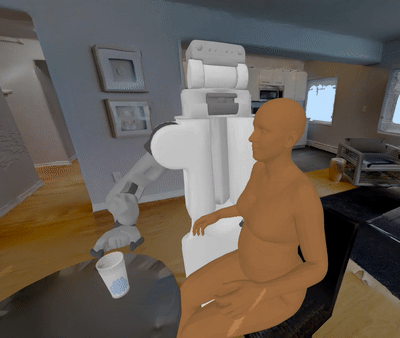
SMPL-X human mesh models are now supported in Assistive Gym. See this wiki page for details of how to use these human mesh models.
A Google Colab example of building a simple robot-assisted feeding environment with SMPL-X human meshes is also available: Assistive Gym with SMPL-X in Colab
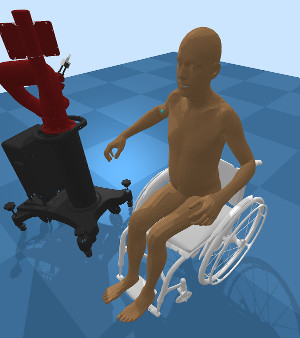
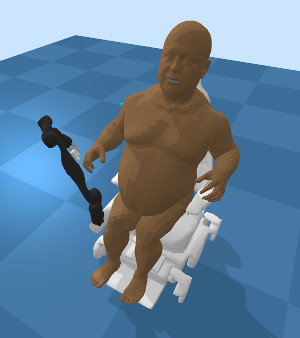
Customizable female and male human models (default body sizes and weights matching 50th percentile humans).
40 actuated human joints (head, torso, arms, waist, and legs)
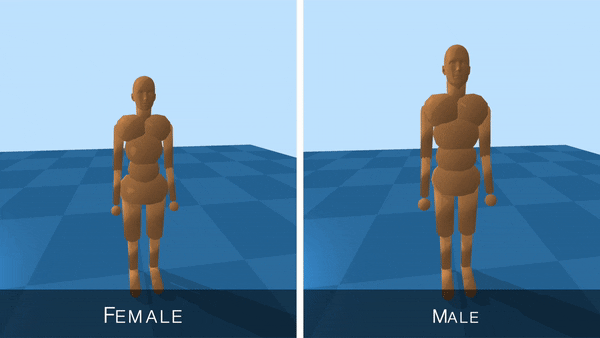
Four collaborative robots (PR2, Jaco, Baxter, Sawyer).
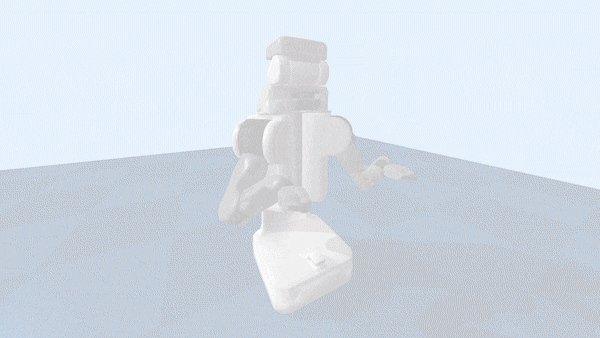
Building off of prior research, Assistive Gym provides a model for realistic pose-dependent human joint limits.

A robot's base pose can greatly impact the robot’s ability to physically assist people.
We provide a baseline method using joint-limit-weighted kinematic isotopy (JLWKI) to select good base poses near a person.
With JLWKI, the robot chooses base poses (position and yaw orientation) with high manipulability near end effector goals.

During assistance, a person will typically prefer for the robot not to spill water on them, or apply large forces to their body.
Assistive Gym provides a baseline set of human preferences unified across all tasks, which are incorporated directly into the reward function.
This allows robots to learn to provide assistance that is consist with a person's preferences.

Refer to the paper for details on features in Assistive Gym.
